The Big Interview: Alnoor Mitha, Asia Triennial
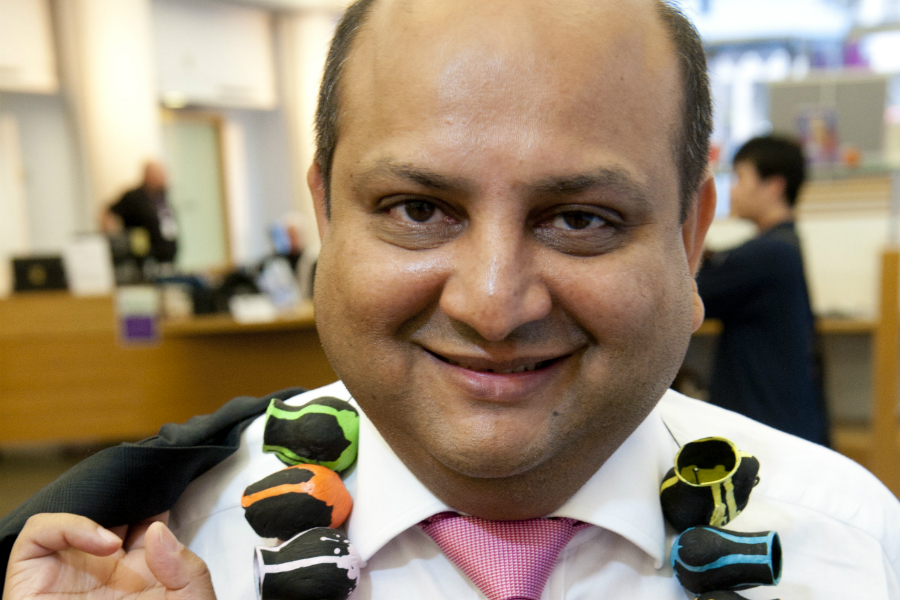
Ahead of the return of the Asia Triennial, Linda Pittwood speaks to its director about surviving potentially catastrophic funding cuts, and how this year’s festival theme must respond to global conflict…
Hi Alnoor. Firstly, can you describe the circumstances around the founding of the first Asia Triennial Manchester (ATM) in 2008?
The main reason was that the climate leading up to 2008 was changing. There were several exhibitions on the theme of Asian art in the UK and beyond, there was the Asia Pacific Triennial (APT) in Brisbane, Australia. And these were showcasing artists that I considered to be producing innovative, interesting work that was really different from the YBAs in Britain and the artists that followed them. There was also the historical significance – trade links between Manchester and Asia meant it made sense to start bringing artists from that part of the world over to the North-West region.
What is the significance of holding the ATM outside of London?
London is seen as a cultural and economic hub — obviously there is the National Gallery, Tate, and artists settle there. But the North-West — Manchester in particular — has a lot to offer culturally. The Commonwealth Games were held in Manchester in 2002 and that event really let the world know what Manchester had to offer. The ATM is a continuation of showcasing Manchester to the world.
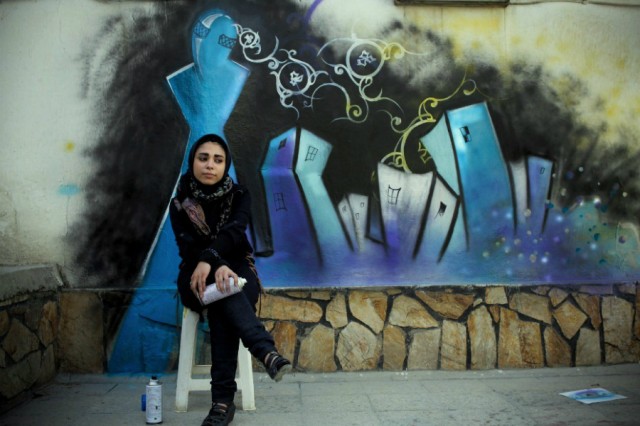
How does this year’s festival move on from the first two versions?
The first two festivals took place under the umbrella of an organisation that I founded called Shisha [an international agency for contemporary South Asian crafts and visual arts]. The organisation lost its Arts Council England funding in 2011, so the festival this year is organized completely differently, with much stronger links to universities, drawing on their international work and research.
All three festivals have been thematic; the 2014 theme is ‘Conflict and Compassion.’ This idea is timely in terms of the global political situation and what we are facing. We are at war. When you listen to the radio, watch television or pick up newspapers, the idea of conflict and compassion seems very resonant. The festival explores how these ideas impact on ordinary people and how artists respond to them. There is also the backdrop of the WW1 centenary, which brings a different and poignant dimension to the festival this year.
There are links both to MIRIAD at Manchester Metropolitan University and to Birmingham University — via Dr Jiang Jiehong (Professor of Chinese Art, CFCCA’s lead curator, and a former curator of Guangzhou Triennial). Do you think this academic basis strengthens the festival?
The academic basis works on many levels and has many angles. The festival relates to my own research on Asian Cultures, and myself and other academics and curators contributed to a publication that followed the 2011 edition of the festival entitled Triennial City: Localising Asian Art. There is an academic agenda, but the festival also acts as a curatorial laboratory. The festival takes a wider learning approach to showcasing what is happening in Asia and the UK.
In terms of the benefits to students, many of our undergraduates, MA and PhD students are researching in Asia and are interested in perennial festivals — so the ATM is fantastic for them. It is also great to be linking to Birmingham City University this time.
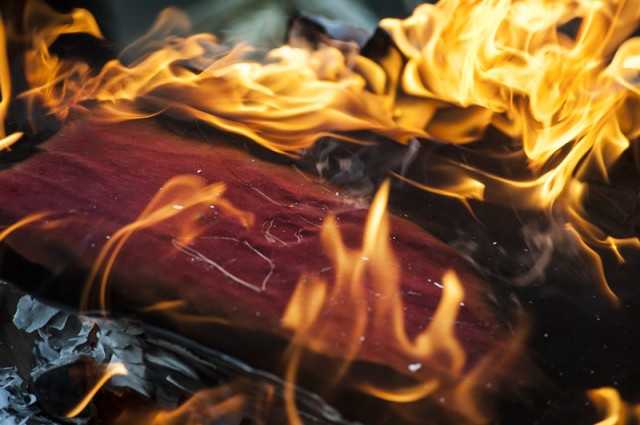
There are many exciting, high-profile, contemporary artists involved this year. Could you talk about one or two of them, and some of the projects that you are most excited about?
Yes, there is Alinah Azadeh, a British artist of Iranian descent working internationally across media. Often involving the public through gift, ritual and dialogue, her works are collective meditations on loss, longing and human connection. Alinah will be presenting Child’s Play (2014) and Burning The Books: The Book of Debts, Volume IX (and remains of previous Books) (2011-15) at the Imperial War Museum North (IWMN). Both works shown here focus on the role material culture and language play in our relationship to conflict, as well as acting as gestures for peace amid the cycles of conflict currently intensifying globally.
Also showing at IWMN is Bashir Makhoul, who will present an installation of 3000 boxes. They are like cities in the Middle East, cardboard boxes representing overlooked dwellings, decayed places. This will be a new work but based on a piece he made for Venice Biennale… He will also show paintings concerned with similar ideas of displaced people, painted in fine detail at the Manchester Contemporary Art Fair.
Many of the key venues in Manchester are involved this year, including the Centre for Contemporary Chinese Art [CFCCA] which is producing an ambitious multi-site show. Harmonious Society will showcase over thirty exceptional Chinese contemporary artists from Taiwan, Hong Kong and Mainland China, across six city centre venues: CFCCA, ArtWork, The John Rylands Library, Manchester Cathedral, Museum of Science & Industry, and the National Football Museum.
Harmonious Society will be the most significant exhibition in the UK to date of contemporary Chinese art, featuring new commissions and UK premieres; curator Jiang Jiehong has focused on the current socio-economic vision presented by the government of mainland China, which seemingly presents ‘no conflict’ but rather, almost poetically, 天下無事, a ‘Harmonious Society’.
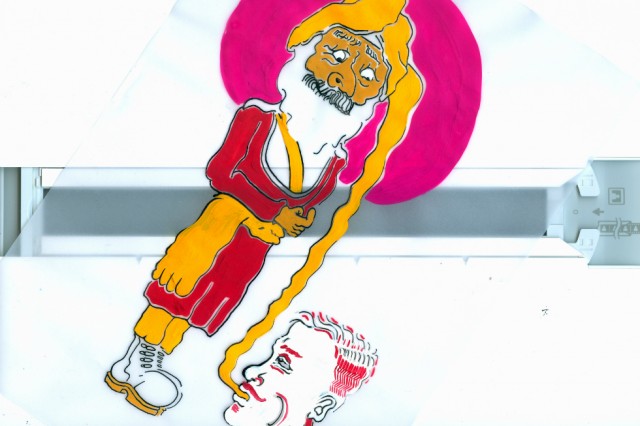
What has the process of coordinating the festival been like?
The ATM has always been about relationships with key partners. We are lucky that all the partners share a similar approach. I don’t think there is another city in the UK where the arts organisations have such a shared, collective vision. Manchester is probably unique in that way. Working on a festival like this will always be challenging because it is ambitious.
Can you tell me more about the new business strand of the festival and why it’s been introduced?
The festival this time has four main strands: the exhibitions, at Imperial War Museum North and other venues; a symposium for artists, academics and curators on the subject of ‘Conflict, Compassion & Resolution’; a business event and the collaborations programme.
The business event will centre on a knowledge exchange and a conference in November. This will bring keynote business entrepreneurs to speak in the context of the artworks at the IWMN; it will act as a bridge between the business and artistic communities.
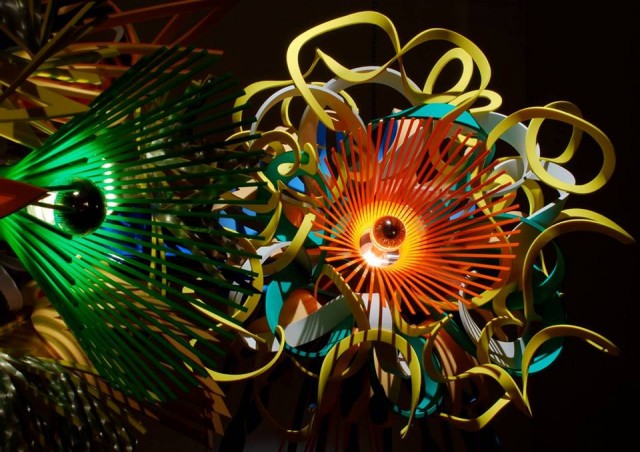
What impacts did the previous festivals have and what do you hope will be the impact of ATM 2014?
What we did after the festival in 2011 was conduct a substantial economic evaluation and audience evaluation and we were encouraged by the results. It bought £7 million to the economy of Manchester and there were over 350,000 visits to both the 2011 and 2008 festivals.
We are hoping to build on both the economic impact and audience numbers this time. Triennials take place every three years and between the festivals we continue the collaborations programme: local artists working with diverse communities in Greater Manchester. The ATM is the focal point, but we use the ideas from the festivals to continue our education strand between festivals and engage local communities. This year one of the education outcomes will be a procession around IWMN using banners that respond to the idea of commemoration and conflict.
Last question! Could you sum up for me in a few words what visitors to Asia Triennial 14 can expect?
Visitors will be spectacularly mesmerized by world-class artists challenging their minds and moving their emotions. From the CFCCA to the cathedral, IWMN and all the partner venues, there will be a diverse cluster of artistic activity in all media. It will celebrate what Manchester can offer culturally and present a powerful message about how art can challenge, move people and transform lives.
Linda Pittwood
Asia Triennial 14 opens Saturday 27 September and continues until 23 November 2014 — free entry
See full programme and participating venues at asiatriennialmanchester.com
Images top to bottom: Alnoor Mitha, Director, Asia Triennial; Afgani street artist, Shamsia Hassani, Imperial War Museum; Alinah Azadeh, Burning The Books, Imperial War Museum (Image courtesy Katja Ogrin); Hardeep Pandhal, Untitled (Camp Coffee study) (2013), Castlefield Gallery; Hsiao-Chi Tsai (Taiwan) and Kimiya Yoshikawa (Japan), Bury Art Museum and Sculpture Centre





